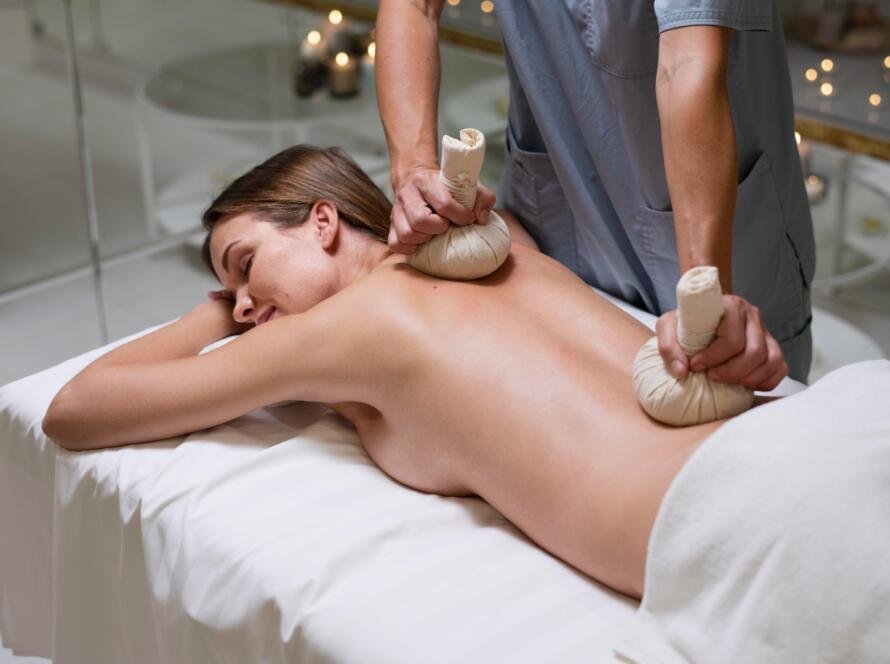Happy Pain: What Is It and Why Does It Matter?
Massage therapy is often associated with comfort, relaxation, and stress relief. But if you’ve ever had a deep tissue massage or trigger point therapy session, you’ve likely encountered a very specific — and often puzzling — sensation: pain that feels oddly satisfying. This is what many refer to as “happy pain.”
While it might sound contradictory, “happy pain” is a real and meaningful part of the therapeutic massage experience. In this post, we’ll explore what happy pain really is, why it happens, how it benefits your body, and how you can manage it to get the most out of your massage session.
What Is “Happy Pain”?
Happy pain refers to the paradoxical sensation of pleasurable discomfort experienced during deep tissue massage or intense muscular work. It’s that moment when pressure on a tight muscle or knot feels sore — even painful — but at the same time, deeply relieving.
Rather than being harmful, happy pain is a sign that:
- Your tight or restricted tissues are being worked on.
- Trigger points or “knots” are being released.
- Adhesions (stuck muscle fibers or fascia) are loosening.
- Stagnant circulation is being stimulated, promoting healing.
Clients often describe it as a “good hurt” — not the type of pain that signals injury, but the kind that suggests healing is underway.
The Science Behind the Sensation
The sensation of happy pain involves a mix of neurological and physiological responses:
- Endorphin release: The body often responds to the pressure by releasing endorphins, the body’s natural painkillers. These neurochemicals can create a mild euphoric feeling and reduce the perception of pain.
- Pain Gate Theory: According to this theory, the spinal cord contains a neurological “gate” that either blocks pain signals or allows them to pass to the brain. Pressure from massage can interrupt pain signals, providing relief.
- Myofascial response: When a therapist applies deep pressure to fascia or muscle tissue, it creates a mechanical and neurological response that helps the tissue reset to a healthier state.
Why It Matters: The Therapeutic Purpose of “Happy Pain”
1. Breaks Up Muscle Knots
Muscle knots, or myofascial trigger points, are tight, contracted areas that can restrict movement and cause referred pain. Deep pressure can “melt” these knots, leading to immediate and lasting relief.
2. Increases Blood Flow
Deep pressure increases circulation to sore or congested muscles. This enhanced blood flow brings oxygen and nutrients and helps flush out metabolic waste like lactic acid, accelerating recovery.
3. Improves Flexibility and Range of Motion
By breaking up adhesions between muscles and connective tissue, massage improves mobility, allowing for better posture and movement.
4. Stimulates Healing and Detoxification
The controlled discomfort encourages the body to repair tissue, reduce inflammation, and remove toxins through improved lymphatic drainage.
Pain vs. Harm: Knowing the Difference
Not all pain during a massage is beneficial. While happy pain is productive, sharp, shooting, or burning pain can indicate potential harm. A skilled massage therapist will always adjust pressure based on your feedback.
Here’s how to tell the difference:
| Happy Pain | Harmful Pain |
|---|---|
| Feels intense but relieving | Feels sharp, stabbing, or burning |
| Dissipates after pressure is released | Lingers or worsens after the session |
| Helps you relax after initial tension | Causes you to flinch or hold your breath |
| Improves mobility and circulation | Leads to bruising or post-treatment pain |
Always communicate with your therapist. They rely on your feedback to find the right balance of depth and comfort.
The Role of Breathing: Your Key to Managing Happy Pain
Breathing plays a crucial role in how your body processes and tolerates deep tissue work.
When you hold your breath during a painful moment, your body tightens, increasing resistance and tension. But when you breathe deeply and consciously, you activate your parasympathetic nervous system, which helps the body:
- Stay relaxed
- Reduce perception of pain
- Let go of emotional or physical resistance
How to breathe during massage:
- Inhale slowly through your nose, filling your lungs and expanding your belly.
- Exhale slowly through your mouth, imagining tension leaving your body.
- Focus on your breath as a grounding tool, especially when pressure intensifies.
Some therapists even guide your breath during deep work, using cues like, “Take a deep breath in… and exhale as I apply pressure.” This synchrony can deepen the therapeutic impact.
When Happy Pain Becomes a Mind-Body Experience
Massage is not just physical — it’s a full mind-body process. When you engage mentally and emotionally with the sensation of happy pain, you tap into the deeper healing layers of your body.
Some clients even find that certain areas of tension carry emotional weight, and that the release of physical knots brings an emotional release too. In this way, happy pain becomes a bridge between physical tension and emotional healing.
Tips for Navigating Happy Pain
- Communicate with your therapist — before, during, and after the session.
- Hydrate before and after your massage to aid tissue recovery.
- Breathe through discomfort and avoid tensing up.
- Rest post-massage to allow your body to fully integrate the benefits.
- Don’t be afraid to say “lighter” — your therapist can adjust pressure without compromising effectiveness.
Final Thoughts
Happy pain is a valuable — and even enjoyable — part of deep tissue work when it’s approached with awareness and trust. It tells you that your body is releasing tension, flushing out toxins, and entering a state of repair. Combined with mindful breathing, this therapeutic discomfort becomes not just bearable, but welcome.
The key to navigating this sensation effectively is your ability to relax and regulate your nervous system, which is where breathing comes into play.
Refers to our blog explaining the connection between breathing and massage here.




